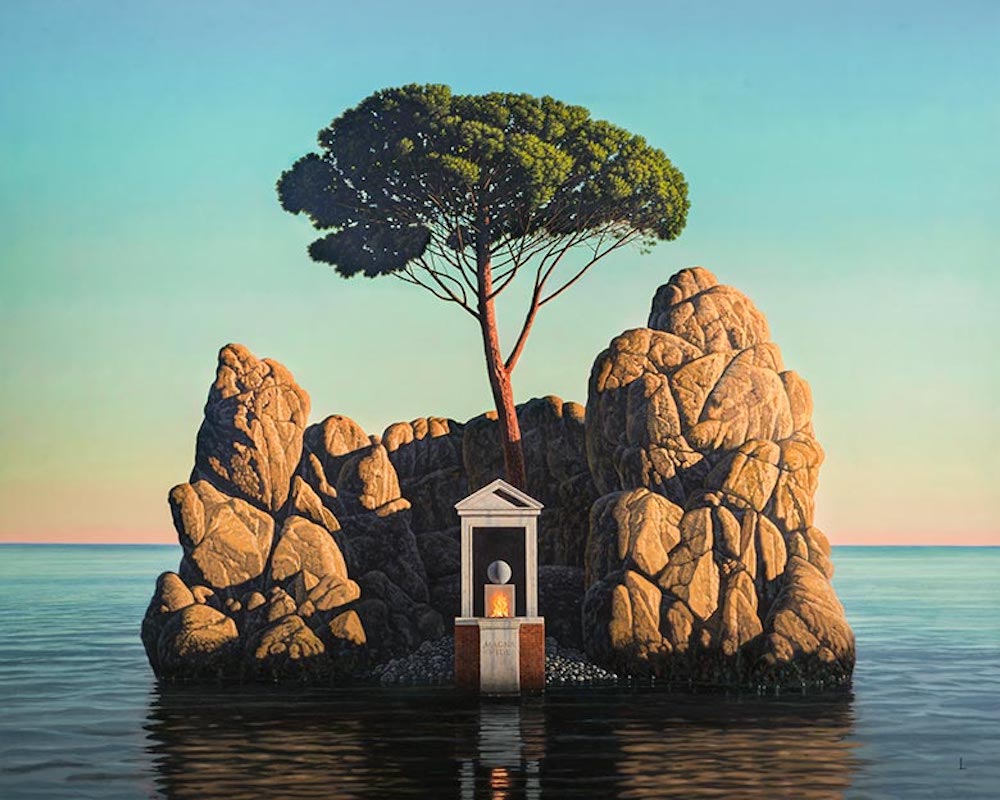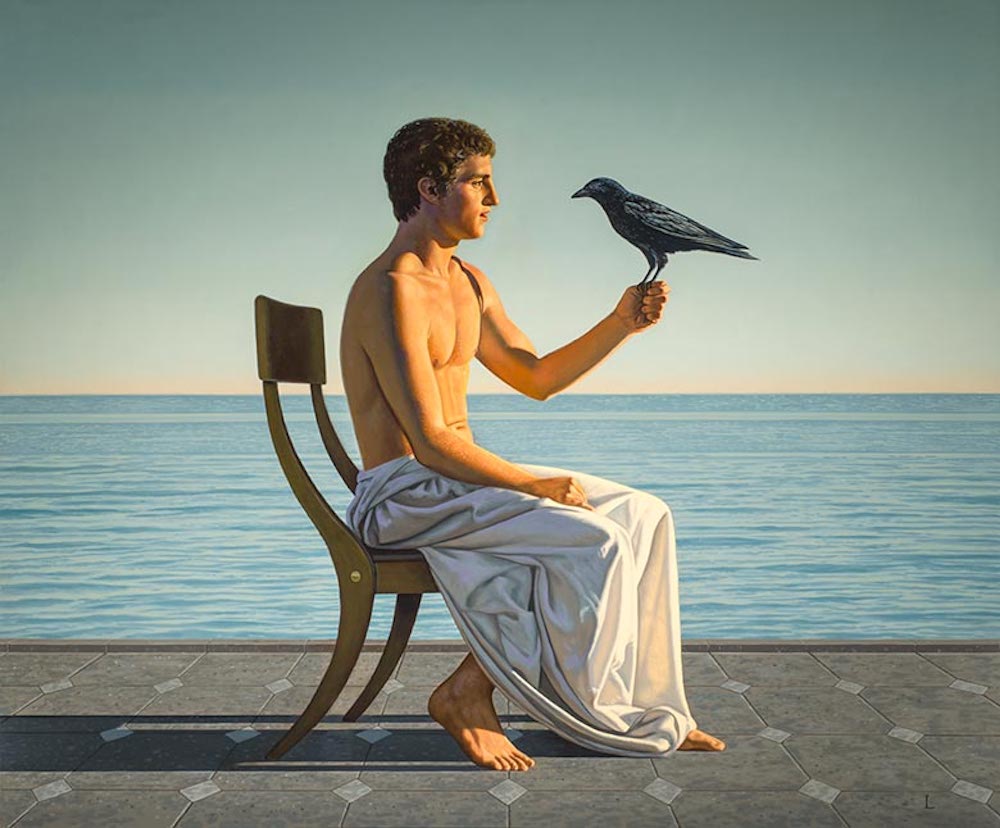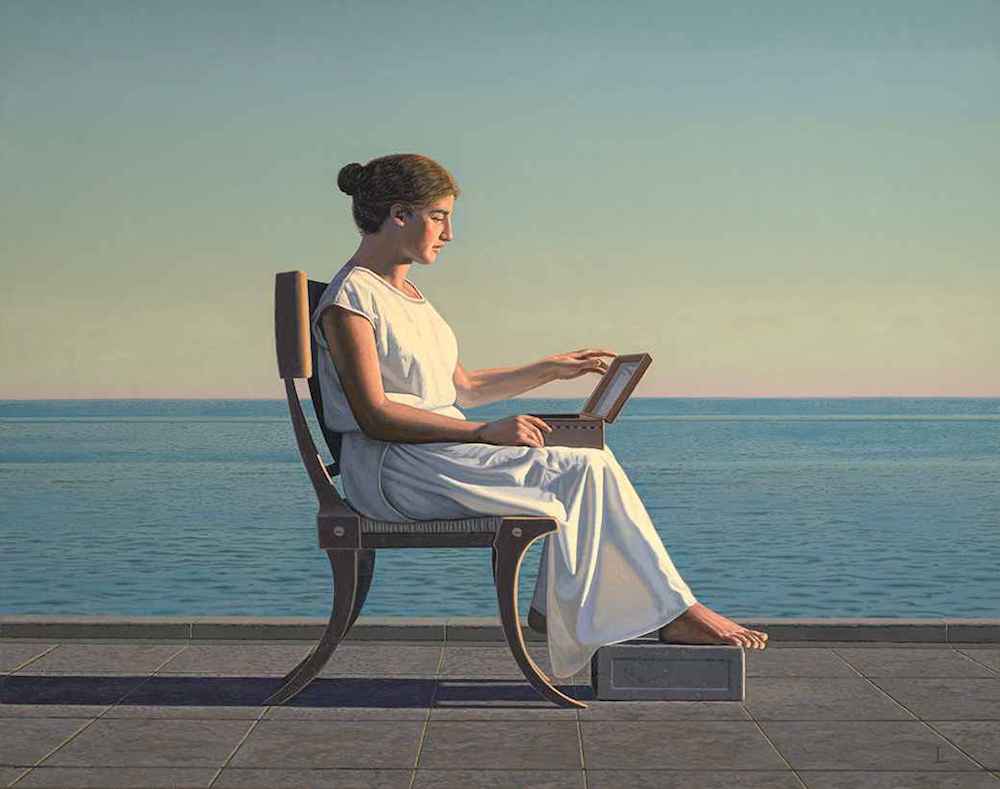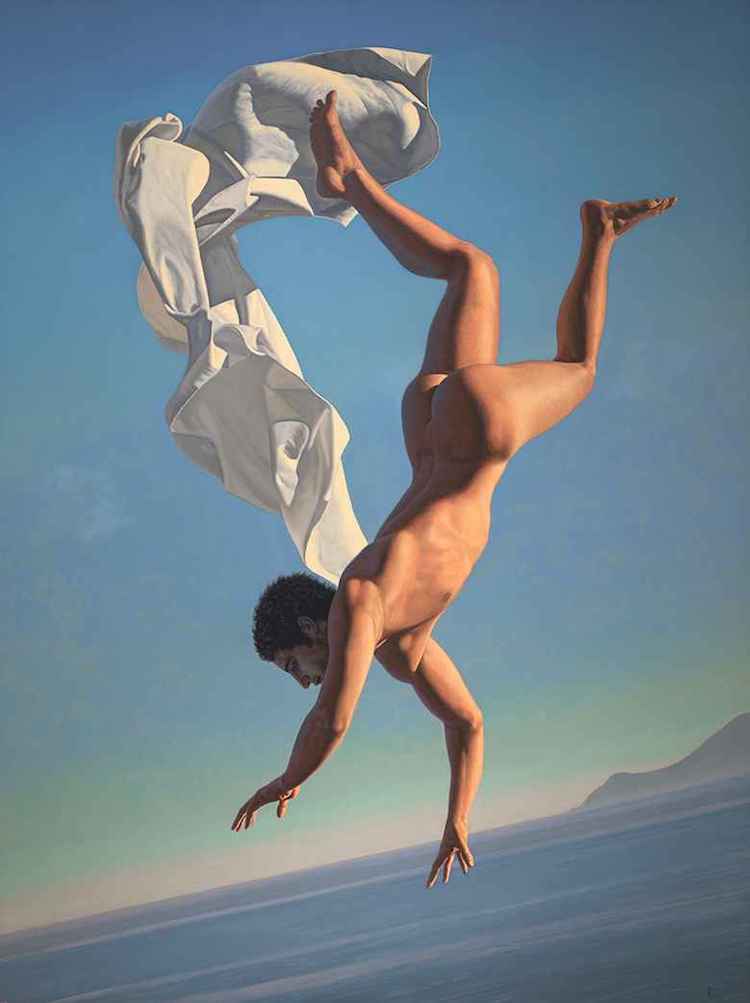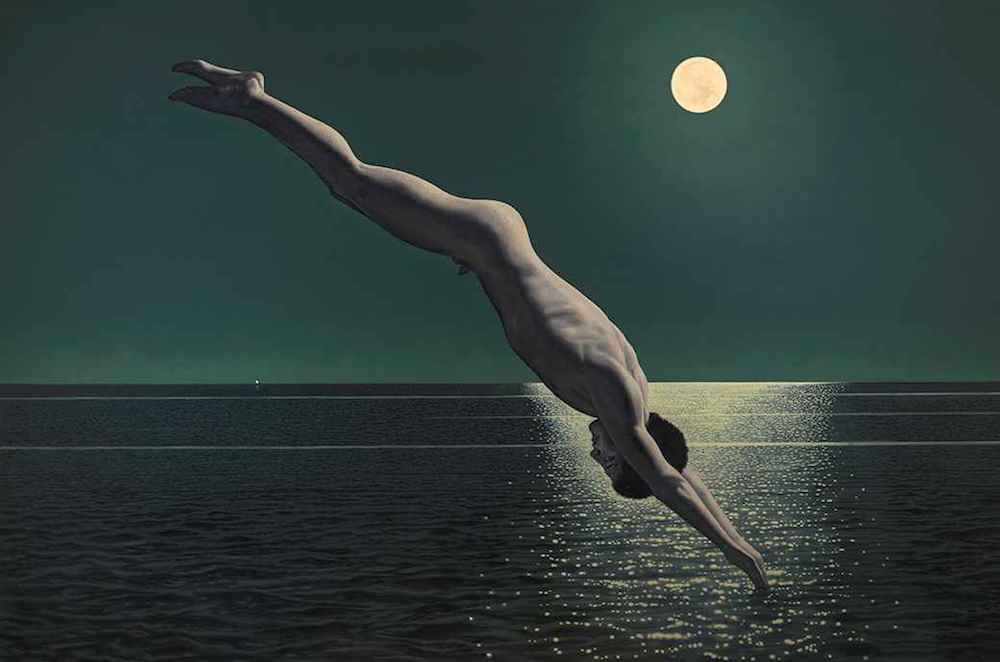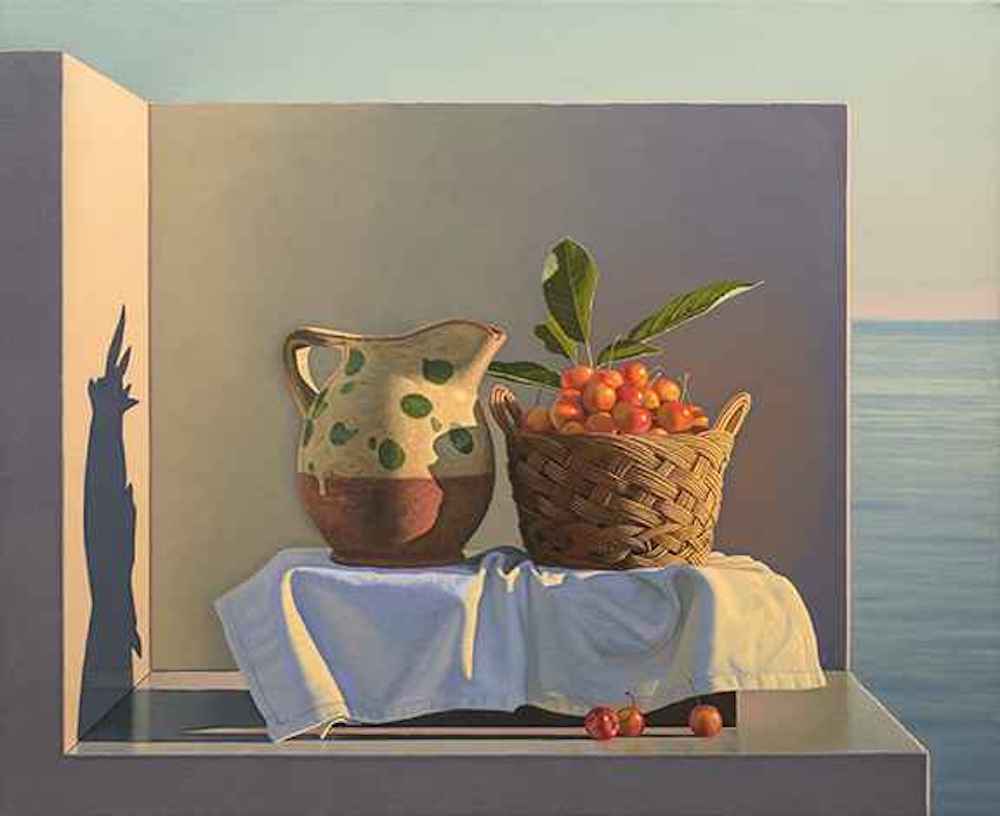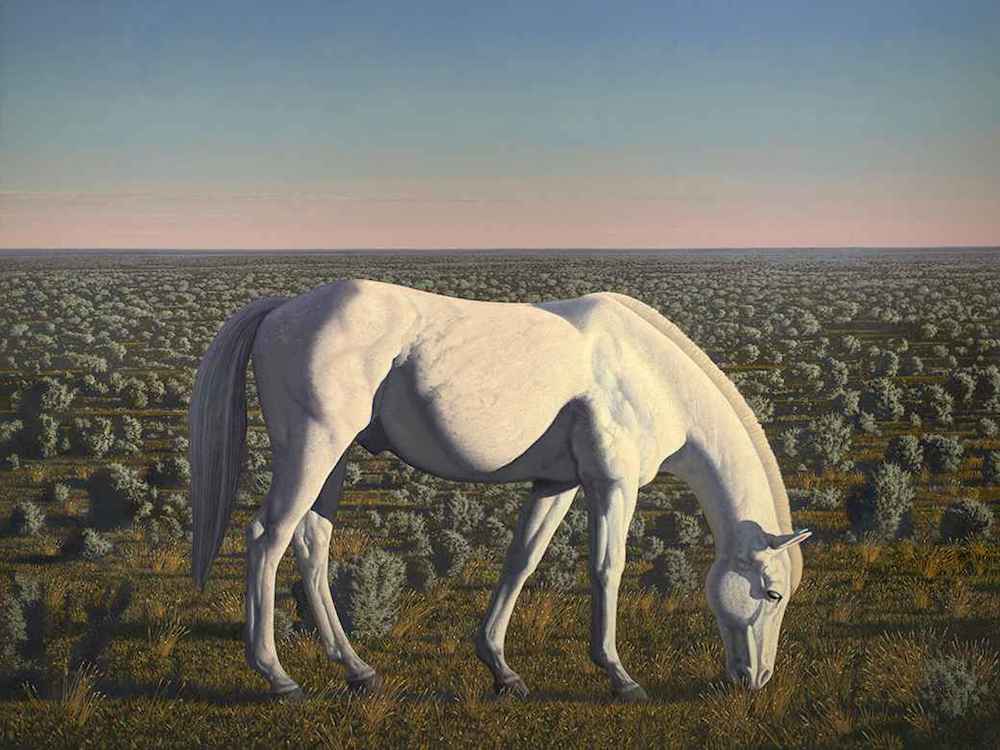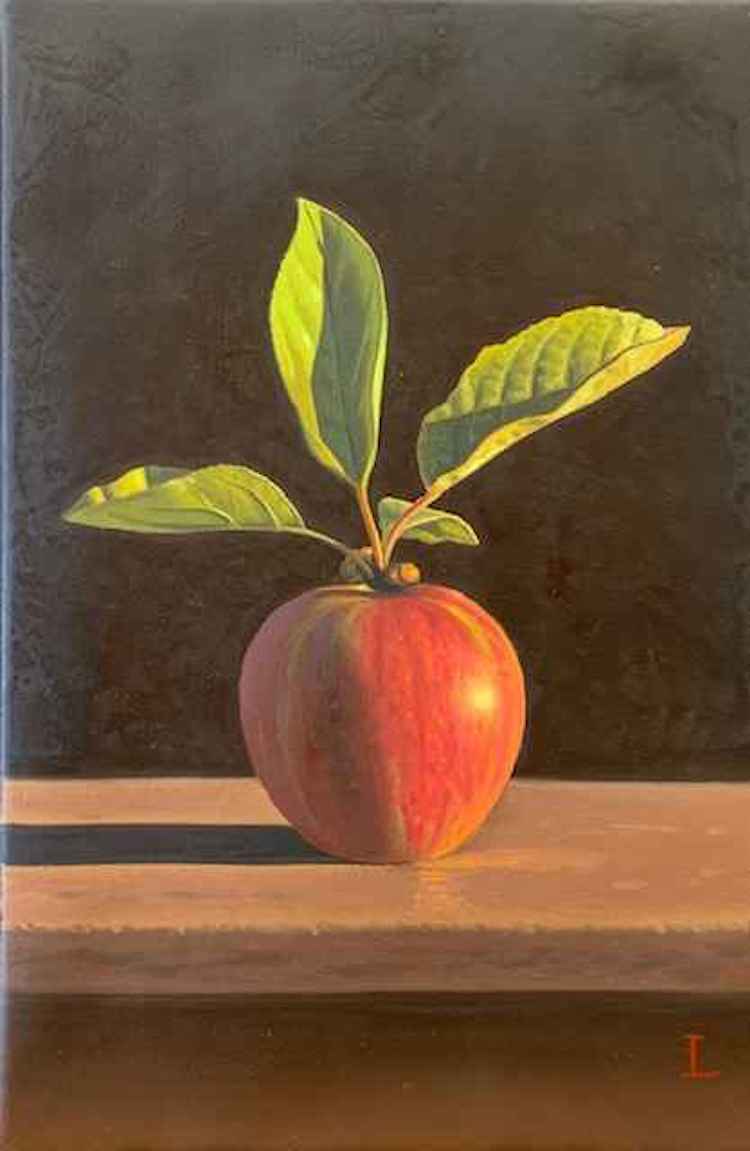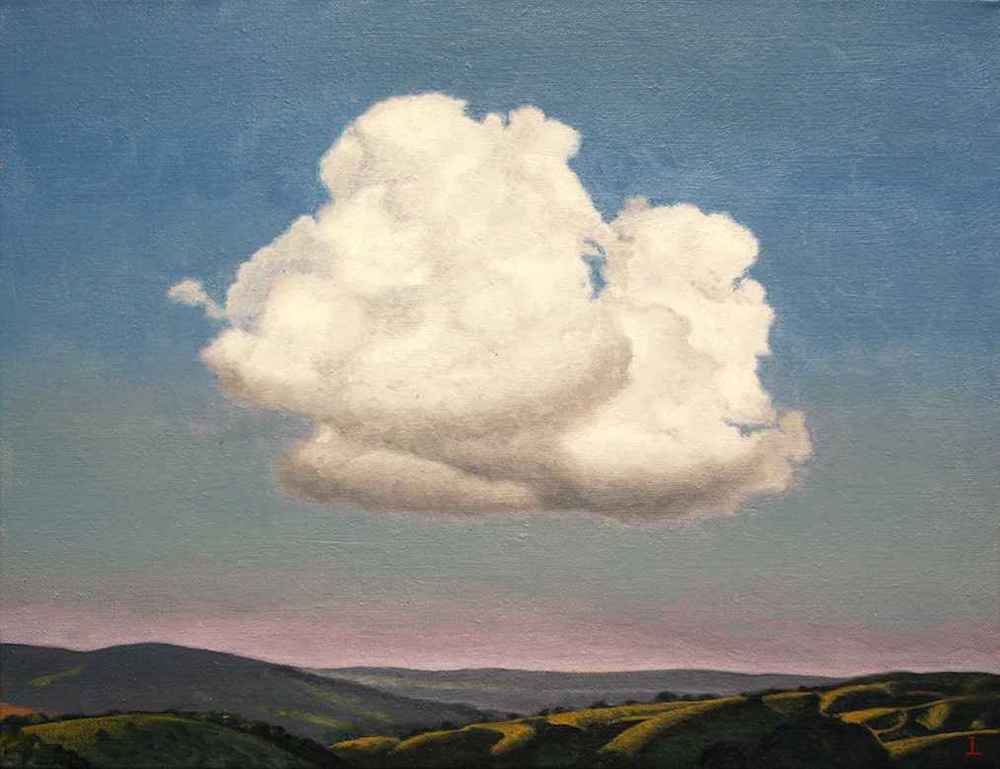David Ligare had his first solo exhibition in New York in 1969. Elements at Santa Fe's LewAllen Gallery marks his forty-eighth. In the way that Homer, Virgil, and Dante endure as essential guides for navigating the complexities of human experience, Ligare is a classicist whose paintings only seem to gain in their capacity to compel and provoke. In this age of unreason, Ligare's approach resonates with renewed and vital urgency.

Cloud Study, 2018. Oil On Canvas, 12 x 16 inches.
How can Ligare's subject matter, which includes rocks and clouds, fruit and vegetables, Icarus and Pandora, be perceived as “urgent”? The post-modern art goer, steeped in satire and parody, and skeptical of universal truth or objective reality, has been trained to reject anything typifying beauty as authoritarian and deceptive. The Modernism of the early 20th Century, which embraced rational ideals and the possibility of progress, was declared hopelessly idealistic decades ago. So how is today's viewer to respond to an artist interested in communicating aesthetically without irony?
Let us consider the headlines. We live in a time of suffering and loss. The news is a constant barrage of ugliness and inhumanity. We crave a return to actual facts. We want to believe it is possible to turn the tide against the cruelties of bigotry, racism, injustice, and exploitation. Viewed through this lens, Ligare's masterful studies of the lone horse grazing in a field, a single cloud suspended above a sunsetted ridge, or a perfectly-composed still life, take on new dimensions. The scenes are staged. This is not Realism, nor historicism. These are idealized presentations of how life rarely looks “in real life.” The paintings are intended to stir the imagination towards what might be possible, if human beings were to apply their energies towards furthering the best of what we have learned from our time on this planet thus far.

Apple, 2019. Oil On Canvas, 11.75 x 7.88 inches.
Ligare is nudging us to dream, not for a nostalgic escape, but to recognize that we are capable of more than we allow. If one painter can assimilate and advance the insights of great sculptors, writers, and philosophers through the ages, then progress may also be ours for the taking. Ligare offers a choice. We can lament the ignorance of leaders who deny science and negate core civic principles or we can desire to put things back into balance, to attend to detail, and to stand for values that transcend and unite. Knowledge tempts us. It makes us human. "Take me," Apple seems to say, learn the still point of virtue and desire.
Ligare's Woman with Box (Pandora) reinforces this sense of loaded alternatives. The woman is at once ancient and modern. Similar to one of Ligare's best-known paintings – the portrait of Penelope, which hangs in the Crocker Museum – the figure is posed before a tranquil seascape on a chair at once classical in shape and fastened with bolts of contemporary manufacture. The pedestal upon which her foot rests is actually a concrete block and the inlaid box that she opens has a timeless look, yet something about her gesture reminds us of a laptop. As the myth goes, when opened, Pandora's container released problems that hadn't previously existed or were unknown to humankind. This is an apt metaphor for the computer as a gateway to a worldwide web rife with malware, election tampering, and fake news.

Woman with a box, (Pandora), 2016. Oil On Canvas. 38 x 48 inches
Young Man with a Crow (A Conversation) is similarly ambiguous. Is the figure communing with another being? Or, is there something in the young man's Narcissus-like gaze that suggests he's only studying himself in the mirror or positioning for a selfie? Ligare's deft compositional hand captures a truth that lies beneath any object of beauty: ideals are not static.
This young man will age, the crow will die, the woman will face adversity from within and without, and certainly the cherries, the prickly pear, and the red pepper that Ligare has presented in their prime will degrade and return to the soil. Ideals are not objects that we achieve and put on a shelf, ideals are the energy that we inject into all that we seek and strive towards.

Study for Young Man with a Crow, (The Conversation), 2014. Oil On Canvas. 20 x 24 inches.
The work of a painter as intellectual as Ligare evokes any number of poets who have put into words the sensations that inspire and haunt the human heart. Mary Oliver is a poet who, like Ligare, turns to natural wonders for instruction. She begins her poem The Summer Day with the question “Who made the world” and ends with these lines:
Tell me, what else should I have done?
Doesn't everything die at last, and too soon?
Tell me, what is it you plan to do
with your one wild and precious life?
This is the challenge that faces every hero, every individual. In Homer's Odyssey, Xenia or “guest friendship” is a decisive theme. Essentially, it is the social ritual of providing food, shelter, and protection to strangers, regardless of status, appearance, or circumstances. Standing in the generous presence of Ligare's offerings, one feels nourished, welcome, and respected. Of course, the luminous gift is also a goad. Look no farther than to the seas through which Odysseus wandered and consider the fates of Syrians exiled by war in search of the most basic refuge. Realism would paint the overcrowded boat. Ligare suggests that we are the oar.

Night Diver, 2019. Oil On Canvas. 60 x 90 inches.
The painting Night Diver 2019 captures a nude male perfectly suspended in the space between air and water, light and dark, gravity and depth, the world we know and the one we have not yet entered. A symmetrical moon presides above a clean horizon balanced by one small dot of illumination. This faint point of light completes a triangle between the diver's outstretched arms as they prepare to enter the surface of the ocean and the moon itself. The point can only be of human origin, perhaps a ship or a town in the far distance. Ligare reminds us that we are not helpless, nor should we despair. We have our voices, our creativity, and our reason. There exists a better way of balancing this realm of natural wonders and human commerce. Truth and beauty are verbs. –Tamsin Smith

